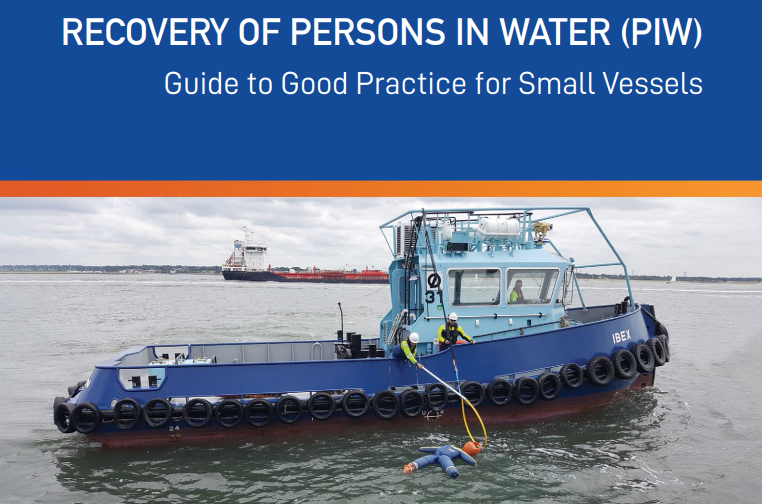Recovery of Persons in Water, a Guide to Good Practice for Small Vessels published by British Tugowners Association.
 The British Tugowners Association has released its latest guidance to industry, Recovery of Persons in Water (PIW), a Guide to Good Practice for Small Vessels.
The British Tugowners Association has released its latest guidance to industry, Recovery of Persons in Water (PIW), a Guide to Good Practice for Small Vessels.
“The guide looks to debunk and demystify various myths and fallacies within the industry, spurring on open debate and discussion with the intent being to save lives,” said BTA chairman and Svitzer Head of Marine Standards Scott Baker.
The intent of the guide is not limited to tugs but applicable across the small boat sector, whether crewboats, pilot boats, workboats or tugs, many of which share similar characteristics and equipment. The BTA’s Technical Committee has spent over a year working on reviewing the task of recovering people from the water to small vessels and appraising the equipment typically found in the small vessel sector. The end goal was to arrive at a complementary suite of equipment that can be used to effect a rescue across the four stages of recovery.
1. Making a connection to the casualty
2. Getting the casualty under control
3. Recovery of the casualty to the deck
4. Medical care and post rescue support on board
Key areas of discussion:
– the ineffectiveness and potential of lifejackets without crotch straps
– cold water immersion, its effects and incorrect confusion with hypothermia
– the truth around vertical and horizontal rescue
– protection for the rescuer(s) on board
– demystifying Automatic External Defibrillators (AEDs)
– post recovery trauma and support
– standardising the handover/transfer of the casualty to emergency services (ATMIST)
The guide also stresses the importance of effective and realistic drills and training.
“Immersion in cold water represents a serious threat to life,” said Professor Mike Tipton from the Extreme Environments Laboratory at the University of Portsmouth, who also contributed to the guide. “But this threat can be significantly reduced with the correct knowledge, procedures, equipment, and training. This comprehensive guide provides the information needed to significantly reduce the chances of a tragedy if an individual goes overboard.”


